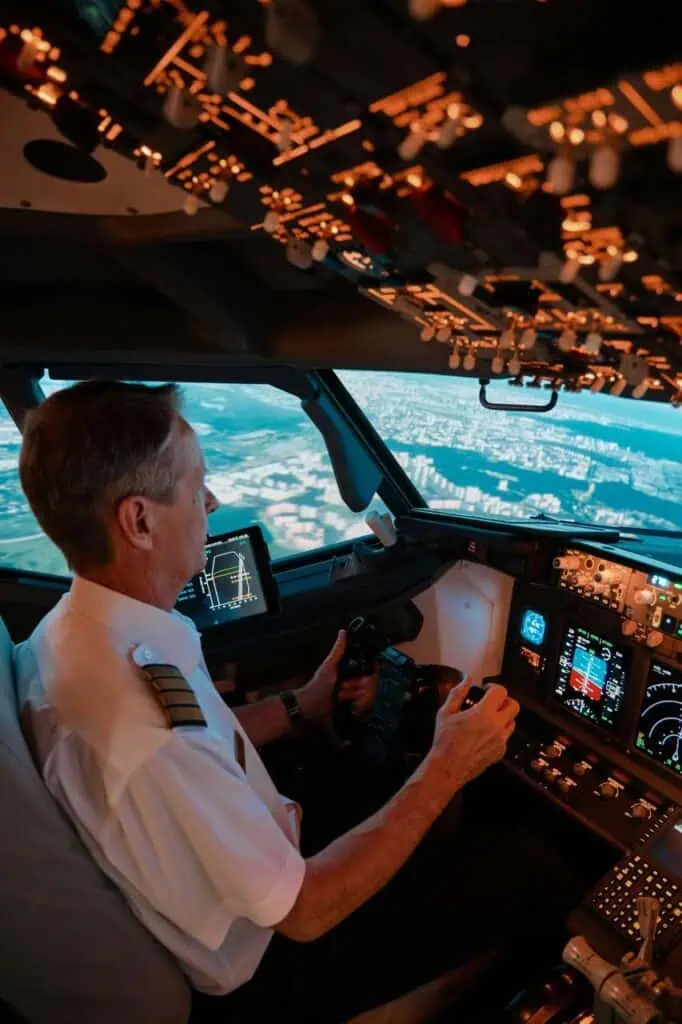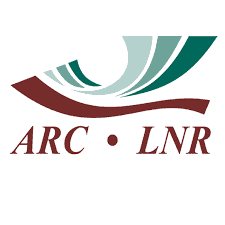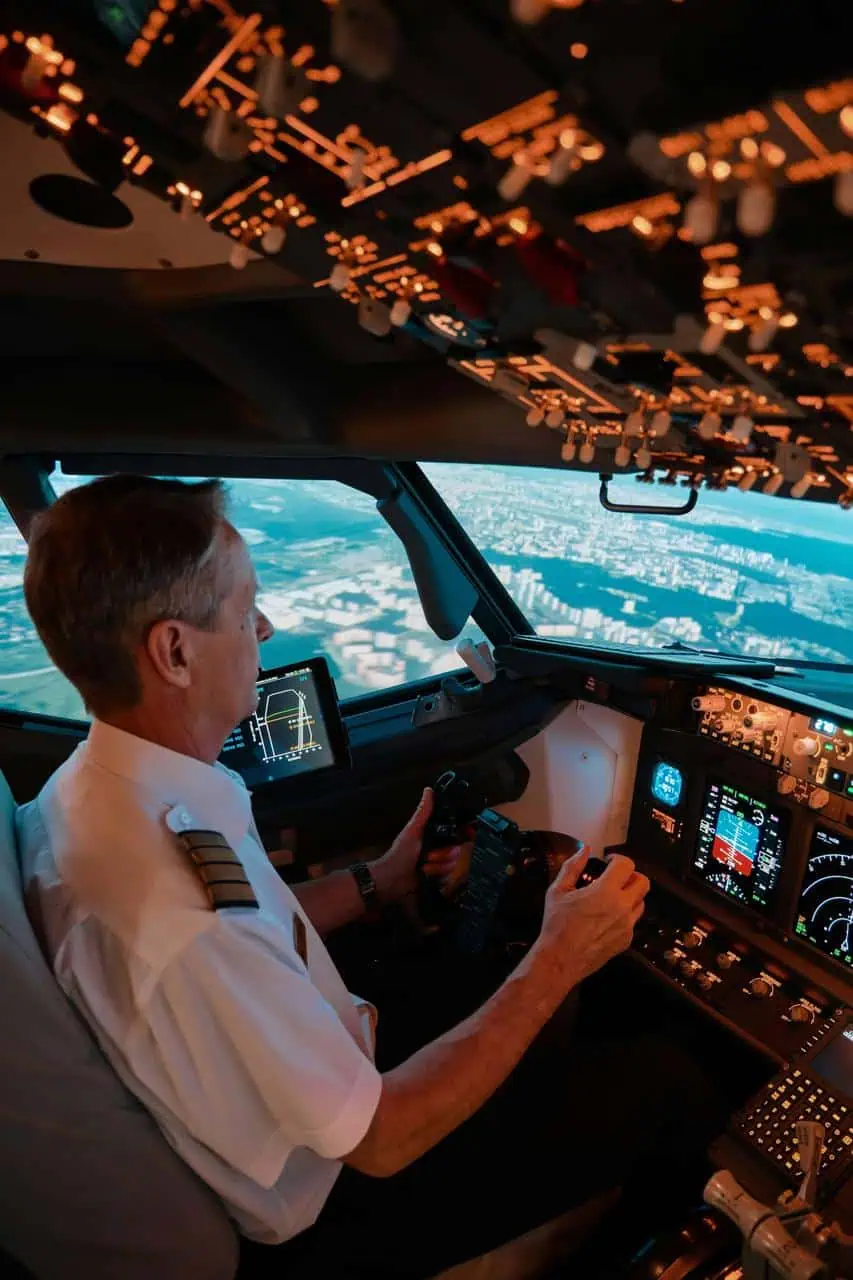Navigating the Skies of a Prestigious Aviation Career

Commercial Airline Pilot Profession
The commercial airline pilot profession represents one of the most respected and technically demanding careers in global transportation, responsible for safely operating sophisticated aircraft while transporting millions of passengers and tons of cargo daily across international airspace.
These highly trained aviation professionals combine technical expertise, decisive leadership, and unwavering focus to ensure the safety and efficiency of each flight.
Commercial airline pilots serve as the ultimate authority during flight operations, with their expertise in flight safety, passenger transportation, and aircraft operation expertise being essential to maintaining the remarkable safety record of modern commercial aviation. This role is part of our Transportation, Warehousing & Distribution Service Career series.
Their work demands exceptional situational awareness, technical knowledge across multiple aircraft systems, and the ability to make critical decisions under pressure in rapidly changing conditions.
For those seeking a challenging career with significant responsibility and global opportunities, commercial airline pilot jobs provide career opportunities across various aviation sectors including major international passenger airlines, regional carriers, cargo operators, and private charter services. While the profession requires substantial upfront investment in training and certification, it offers excellent compensation, structured advancement paths, and the unique perspective that comes from navigating aircraft across the globe.
Aviation Industry Overview
The global aviation industry continues to experience long-term growth despite periodic challenges, creating consistent demand for qualified commercial airline pilots in passenger airlines, cargo airlines, corporate aviation, and military transport. This specialized profession remains essential to air transportation worldwide, with positions available across numerous airlines, charter operators, and freight carriers of various sizes.
Current job market conditions show robust demand for various pilot roles, including first officers, airline captains, and international pilots. The industry faces a projected global pilot shortage over the coming decades due to fleet expansion, pilot retirements, and the significant training time required to prepare new aviators. This favorable supply-demand balance creates excellent career prospects for those entering the profession.
Several significant trends are reshaping commercial aviation:
- The increasing impact of aviation technology including advanced flight management systems and cockpit automation
- Integration of pilot automation systems that change how pilots interact with aircraft
- Continued global travel expansion creating demand for new routes and increased flight frequency
- Growing emphasis on sustainable aviation practices and fuel efficiency
- Regional variations in growth, with particularly strong expansion in Asia-Pacific markets
As commercial aviation continues to evolve, the fundamental importance of aviation safety, air traffic control coordination, and pilot certification programs remains paramount, ensuring ongoing career opportunities for qualified pilots with the appropriate certifications, experience, and professional attributes.
Commercial Airline Pilot Job Availability & Global Pay Comparison 📌
Airline Flight Crew Jobs Availability by Region
The availability of commercial pilot positions varies globally, influenced by factors such as regional airline growth, fleet expansion, and pilot retirement rates. Currently, positions are most abundant in:
- North America: Major US and Canadian carriers, regional airlines, and cargo operators
- Asia-Pacific: Rapidly expanding carriers in China, Singapore, and the Middle East
- Europe: Traditional flag carriers and expanding low-cost airlines
- Oceania: Major Australian and New Zealand carriers with domestic and international routes
- Middle East: Premium international airlines with extensive global networks
Commercial airline pilot jobs are available across diverse settings, including major airlines, regional carriers, private aviation, and cargo transport companies. The industry particularly values pilots with commercial pilot licenses (CPL), airline transport pilot licenses (ATPL), and flight hours experience relevant to specific aircraft types.
Most commercial positions require extensive qualifications such as FAA (USA), EASA (Europe), CASA (Australia), or ICAO pilot certifications along with type ratings for specific aircraft models and accumulated flight experience. These credentials determine both employment eligibility and seniority placement.
Average Commercial Airline Pilot Salary Comparison (Annual)
| Region | First Officer | Captain (Mid-Career) | Senior Captain |
| USA | $70,000 – $120,000 | $120,000 – $200,000 | $200,000 – $350,000+ |
| UK | £50,000 – £90,000 | £90,000 – £140,000 | £140,000 – £200,000+ |
| Canada | CAD $80,000 – $120,000 | CAD $120,000 – $180,000 | CAD $180,000 – $250,000+ |
| Australia | AUD $90,000 – $150,000 | AUD $150,000 – $220,000 | AUD $220,000 – $300,000+ |
| New Zealand | NZD $75,000 – $120,000 | NZD $120,000 – $180,000 | NZD $180,000 – $250,000+ |
| Europe | €60,000 – €100,000 | €100,000 – €180,000 | €180,000 – €280,000+ |
| Asia & Middle East | $50,000 – $120,000 | $120,000 – $180,000 | $180,000 – $300,000+ |
Compensation varies significantly based on airline size, aircraft type, and international versus domestic operations. Wide-body international captains typically earn the highest salaries, while regional airline pilots generally earn at the lower end of the range. Many airlines also provide substantial benefits including travel privileges, retirement plans, and per diem payments during trips.
Career Potential Grade for Commercial Airline Pilots
⭐⭐⭐⭐⭐ High Career Growth Potential in Commercial Aviation & Airline Management
The career trajectory for commercial airline pilots offers excellent growth potential, following a structured progression from first officer to captain based primarily on seniority and accumulated flight experience. Career advancement typically depends on a combination of factors including flight hours, certifications, and airline seniority rankings.
With experience and additional qualifications, commercial airline pilots can transition into flight instructors, airline captains, or aviation safety inspectors as well as management roles within airlines or regulatory agencies. The profession offers exceptional career stability once established, with clear advancement paths and the opportunity to operate progressively larger and more sophisticated aircraft throughout one’s career.
Essential Skills and Requirements for Airline Flight Operations 📌
Aircraft Navigation and Flight Control Systems Expertise
Professional commercial airline pilots must develop comprehensive mastery in taking off, cruising, and landing commercial aircraft safely under diverse conditions. This includes proficiency with both manual flight controls and automated flight management systems across various phases of flight. Pilots must demonstrate exceptional hand-eye coordination, spatial awareness, and the ability to manage complex aircraft systems simultaneously while maintaining precise flight paths.
Airline Flight Safety and Emergency Procedures Knowledge
Commercial pilots require extensive training in handling in-flight emergencies, cabin depressurization, and passenger safety situations. This includes memorized response protocols for engine failures, aircraft system malfunctions, severe weather encounters, and medical emergencies. Pilots must maintain proficiency through regular simulator training scenarios that test their ability to manage complex emergency situations while following established procedures and exercising sound judgment.
Flight Planning and Air Navigation Skills
Airline pilots must excel in calculating fuel needs, weather conditions, and alternate flight routes as part of comprehensive flight planning responsibilities. This includes understanding aeronautical charts, analyzing meteorological data, calculating weight and balance limitations, and determining fuel requirements with appropriate reserves. Pilots must make complex decisions regarding route selection, altitude choices, and contingency planning while coordinating with airline dispatchers and air traffic control.
Passenger Transport and Airline Operational Standards
Pilots must demonstrate thorough knowledge of FAA, EASA, ICAO, and airline-specific flight operation rules that govern commercial air transportation. This includes understanding of minimum equipment lists, operating limitations, duty time restrictions, and documentation requirements. Pilots are responsible for ensuring full regulatory compliance while maintaining the operational efficiency expected by their airline.
Type Rating Certification for Commercial Aircraft
Commercial pilots must obtain specific certifications for each aircraft type they operate, demonstrating their ability to assess risks, manage turbulence, and ensure passenger comfort while operating that specific aircraft model. Type ratings require rigorous training in both normal and abnormal procedures, systems knowledge, and handling characteristics particular to each aircraft. These specialized qualifications represent a significant investment by both pilots and airlines.
Commercial Airline Pilot Career Advancement Paths 📌
Entry-Level Commercial Aviation Positions
Most airline pilot careers begin after accumulating significant flight experience in other aviation sectors:
- First Officer (Co-Pilot): Serves as second-in-command on commercial flights while developing operational experience
- Regional Airline Pilot: Operates smaller commercial aircraft on shorter routes serving as feeders to major hubs
- Cargo Transport Pilot: Flies freight aircraft, often gaining experience during overnight operations
These positions typically require a commercial pilot license with instrument rating, multi-engine qualification, and a minimum number of flight hours (typically 1,500 hours for US carriers under FAA regulations). Entry-level positions focus on building jet aircraft experience and airline operational knowledge.
Mid-Level Airline Transport Pilot Roles
With experience and accumulated flight time, pilots advance to positions with greater responsibility:
- Senior First Officer: Takes on additional responsibilities in the cockpit with higher seniority at their airline
- Commercial Airline Captain: Assumes command authority as pilot-in-charge of commercial flights
- Flight Instructor: Trains new pilots while maintaining active flight status with their airline
These positions often require an Airline Transport Pilot License (ATPL), several thousand hours of flight experience, and demonstrated proficiency in airline operations. Mid-level roles involve greater decision-making authority and responsibility for both aircraft and passengers.
Senior Commercial Flight Operations Positions
Experienced pilots with exceptional skills and additional qualifications can advance to:
- Airline Training Captain: Conducts training and evaluation of other pilots while maintaining line operations
- Chief Pilot: Oversees pilot groups and serves as liaison between line pilots and airline management
- Airline Safety Inspector: Monitors compliance with safety procedures and regulatory requirements
These roles combine operational expertise with leadership responsibilities, often requiring additional qualifications in training, management, or safety systems.
Advanced Aviation Management Opportunities
The most experienced pilots may eventually transition to:
- Director of Airline Operations: Oversees entire flight operation departments and establishes operational policies
- Aviation Consultant: Provides expertise to airlines, manufacturers, or regulatory agencies
- Airline Executive Manager: Shapes strategic direction of airline operations and fleet planning
Many commercial airline pilots successfully transition into corporate aviation, aviation regulation, or airline management roles after establishing their operational expertise. These advanced positions often require additional education in aviation management, business administration, or regulatory policy.
Commercial Airline Pilot Resume Tips
When creating your commercial airline pilot resume, focus on showcasing your flight training, aviation safety expertise, and commercial pilot certifications. The most effective format typically includes a chronological layout highlighting progressive responsibility and accumulated flight experience.
Begin with a powerful professional summary that emphasizes your license level, total flight hours, and aircraft type qualifications. For example: “ATPL-certified Commercial Airline Pilot with 5,000+ hours in Boeing 737 operations. Experienced in international routes across Europe and North America with an impeccable safety record across 2,500+ commercial flights.”
Essential Sections for Airline Pilot Applications
Your resume should highlight experience in airline operations, long-haul flights, and international travel regulations. Key sections to include:
- Flight Qualifications: Detail license type, ratings, medical certification, and currency status
- Flight Experience: Break down total hours by aircraft type, position (PIC/SIC), and conditions (night/IFR)
- Aircraft Type Ratings: List all commercial aircraft you’re certified to operate
- Training History: Include recurrent training, simulator checks, and specialized operational courses
- Safety Record: Emphasize your history of safe operations and any special safety training
How to Write a Commercial Airline Pilot Cover Letter
Your application letter should demonstrate your understanding of the specific airline’s operational model and fleet composition. Begin with a clear statement of your qualifications and total flight hours, then connect your specific experience to the airline’s route structure and aircraft types.
In the body of your cover letter, highlight 2-3 specific achievements that showcase your capabilities as a commercial pilot, such as handling challenging airport approaches, managing operational irregularities, or implementing safety enhancements. Close by expressing enthusiasm for contributing to the airline’s reputation for safety and operational excellence.
Many applicants benefit from using a resume builder or cv maker that offers templates optimized for aviation positions, ensuring all crucial information is presented effectively. These tools can help ensure your application meets industry standards while highlighting your unique qualifications and flight experience in a format familiar to airline hiring managers.
Commercial Airline Pilot Interview Questions and Preparation Guide 📌
Common Airline Flight Crew Interview Questions
The interview process for commercial airline pilot positions typically combines standard employment questions with technical assessments of aviation knowledge and judgment. Prepare thoroughly for these frequently asked questions:
- “How do you handle in-flight emergencies such as engine failure?” Outline your systematic approach following the appropriate checklist procedures, emphasizing crew coordination, communication with ATC, and decision-making regarding diversion options.
- “What steps do you take to ensure passenger safety during turbulence?” Explain your proactive approach to weather avoidance, use of weather radar, coordination with cabin crew for passenger preparation, and smooth control inputs to minimize discomfort.
- “How do you coordinate with air traffic control during a flight deviation?” Detail your communication protocols, including requesting clearance before deviating, maintaining situational awareness, and providing clear information about your intentions and requirements.
- “Describe a challenging situation you’ve encountered as a pilot and how you resolved it.” Structure your answer to demonstrate your decision-making process, resource management, and adherence to procedures while emphasizing the successful outcome.
Technical Knowledge Assessment
Before your interview, thoroughly research airline policies, flight safety protocols, and international aviation lawsrelevant to the airline’s operations. Be prepared to demonstrate knowledge of:
- Aircraft systems and limitations specific to the airline’s fleet
- Company standard operating procedures and operational philosophy
- Regulatory framework governing the airline’s operations
- Route structure and challenging airports served by the company
Simulator Evaluation Preparation
Many airline interviews include simulator assessments that evaluate your flying skills and procedural knowledge:
- Review normal and emergency procedures for the relevant aircraft type
- Practice standard instrument arrivals and departures for major hubs
- Refresh your knowledge of raw data instrument flying techniques
- Prepare to demonstrate effective crew coordination and communication
Success in commercial airline pilot interviews requires demonstrating both technical proficiency and the professional attributes essential to the profession: sound judgment, effective communication, leadership skills, and unwavering commitment to safety standards.
International Opportunities for Commercial Airline Pilots 📌
Best Airlines for Commercial Pilot Careers
The global airline industry offers diverse opportunities for commercial pilots, with significant variations in working conditions, compensation, and quality of life across different carriers and regions.
Top Airlines for Commercial Pilot Employment:
- Legacy Carriers: United, American, Delta, British Airways, Lufthansa
- Premium International Airlines: Emirates, Qatar Airways, Singapore Airlines
- Cargo Operators: FedEx, UPS, DHL, Atlas Air
- Low-Cost Carriers: Southwest, JetBlue, easyJet, Ryanair
- Regional Airlines: SkyWest, Republic Airways, Horizon Air
These organizations offer different advantages including varied fleet types, route structures, schedule flexibility, and compensation packages. Evaluating which airline best matches your career goals requires considering factors beyond base pay, including domicile options, work rules, and growth potential.
How to Transition from Military Pilot to Commercial Airline Captain
Military pilots possess valuable skills that transfer well to commercial aviation. Key considerations for this career transition include:
- Understanding the differences between military and civilian flight operations and regulations
- Converting military flight hours and qualifications to civilian equivalents
- Obtaining appropriate civilian pilot licenses and ratings
- Adapting to commercial standard operating procedures and crew coordination concepts
- Marketing military leadership experience and advanced training to airline recruiters
Many airlines actively recruit military pilots, recognizing the extensive training and operational experience they bring to commercial operations. Special hiring programs and seniority recognition are often available to transitioning military aviators.
How Much Do Commercial Airline Pilots Earn in Different Countries
Compensation for commercial pilots varies significantly by location, influenced by factors including cost of living, pilot supply, airline financial health, and labor agreements. Beyond the basic salary figures provided earlier, these additional considerations affect total compensation:
- Per diem payments during trips away from base
- Profit-sharing programs at many major carriers
- Retirement contributions which can be substantial at established airlines
- Health and life insurance benefits that vary significantly by region
- Travel benefits for pilots and their families
- Quality of life considerations including scheduling, domicile options, and contract work rules
Commercial pilots considering international opportunities should research comprehensive employment packages rather than focusing solely on base salary figures, as work rules, benefits, and lifestyle considerations can substantially impact career satisfaction.
Future Trends in Commercial Aviation and Pilot Careers 📌
Advanced Cockpit Systems and Automation Evolution
The commercial pilot profession is experiencing significant technological evolution that will reshape pilot roles and required skills:
- Increasing sophistication of flight management systems and automation
- Enhanced navigation precision through satellite-based systems
- Augmented reality systems for low-visibility operations
- Integrated data link communications reducing voice radio traffic
- Advanced flight data monitoring systems providing real-time analysis
Pilots who embrace these technological advancements and develop proficiency with new systems will find expanded career opportunities as the industry continues to modernize.
Flight Hours Requirements and Logbook Management Changes
Regulatory evolution continues to impact pilot qualification requirements:
- Growing emphasis on competency-based training alongside hour requirements
- Increased recognition of simulator time in certain training scenarios
- Enhanced requirements for specific operational experience (mountainous terrain, high-altitude airports)
- More structured approach to mentoring and operational experience
- Growing use of evidence-based training methodologies
Pilots who understand these evolving qualification frameworks and document their experience strategically will navigate career advancement more effectively.
International Aviation Regulations for Commercial Pilots
Global regulatory harmonization is creating both challenges and opportunities:
- Increasing standardization of pilot licensing across major jurisdictions
- Enhanced security requirements for flight crews
- Growing emphasis on fatigue management and scientific scheduling principles
- Evolving environmental regulations affecting flight operations
- Standardization of operational procedures across international boundaries
Pilots with knowledge of international regulations and the ability to operate effectively within different regulatory frameworks will be particularly valuable as airlines expand global operations.
Conclusion: Building a Successful Commercial Airline Pilot Career 📌
The commercial airline pilot profession offers an exceptional combination of technical challenge, responsibility, and career stability. With strong global demand, premium compensation, and clear advancement pathways, airline piloting remains an attractive career choice for those with the aptitude, determination, and financial resources to complete the extensive training requirements.
Success in this field requires unwavering commitment to safety, continuous technical learning, and adaptability as aviation technologies evolve. By building a foundation of core piloting skills, accumulating valuable flight experience, and developing specializations aligned with industry trends, aspiring commercial airline pilots can construct rewarding and durable careers in this prestigious profession.
To maximize your potential in the commercial aviation field:
- Pursue the most efficient path to building quality flight hours and certifications for your specific regional requirements
- Develop comprehensive knowledge of aircraft systems and operational procedures beyond the minimum requirements
- Build proficiency with advanced avionics and automation systems while maintaining fundamental flying skills
- Cultivate both technical expertise and effective communication skills with crew members, passengers, and operational staff
- Establish a continuous learning mindset to adapt to evolving aircraft technology and regulatory requirements
Whether you’re drafting your first application letter for a regional airline position or advancing toward a wide-body captain role at a major carrier, approach your aviation career with both technical precision and strategic vision. The field rewards those who combine fundamental flying skills with professionalism, sound judgment, and operational discipline.
Use the resources at CV4Students to create a professionally structured commercial airline pilot resume that showcases your flight qualifications and operational experience. With the right preparation and continuous professional development, you can build a rewarding career in this prestigious aviation profession that offers both significant responsibility and exceptional rewards.
Explore More in This Industry
Looking for other career options in this field?
👉 View more Transportation, Warehousing & Distribution Service Careers.
Resources & Organizations
These featured organizations play an active role in advancing pest management, scientific research, and agricultural development through education, policy, and innovation.

The African Association of Insect Scientists (AAIS) is a professional body committed to strengthening entomological science across Africa through research, education, and pest management innovation.
Visit Site →

The New Zealand Plant Protection Society promotes the science and practice of plant protection through conferences, publications, and collaboration with growers, researchers, and pest control professionals.
Visit Site →

The Agricultural Research Council of South Africa – Plant Protection leads national research efforts in crop protection, biosecurity, pest diagnostics, and integrated pest management (IPM) for sustainable agriculture.
Visit Site →
These organizations are featured for their outstanding contributions to pest management science, training, and global agricultural development.
This Commercial Airline Pilot Career Guide provides general information about the profession globally. Specific requirements, compensation, and opportunities may vary by region, employer type, and individual qualifications. Always research current conditions in your target market when making career decisions.
